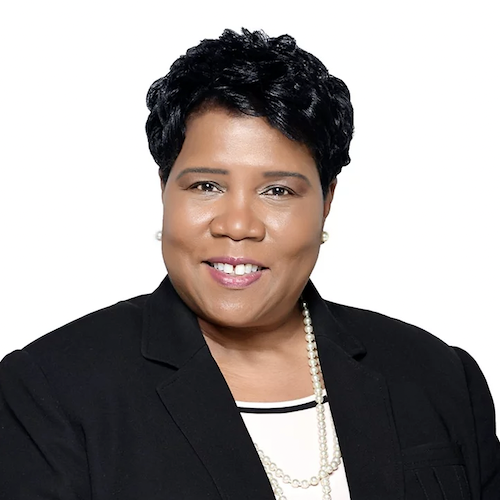Editor’s Note: Dr. Susie Long is currently drawing upon her forty plus years of educational experience in both public and private schools to operate Long Educational Consulting as a service to Christian schools. She is CT Certified and offers a discount to Curriculum Trak schools. This is the first in a series of articles she will be sharing with the Curriculum Trak community.
My journey began when I entered the doors of our Christian School. I had been asked by the pastor of our church to serve as principal for the next eight years. Upon arrival, I was full of excitement, anticipation, and reverential fear just thinking of what God was going to do in my life and the life of our school. During my earlier career in public schools, I developed a sincere desire to work in a Christian school environment; however, I knew I had to wait for the timing of God. Thirty-three years later, that time finally arrived.
Retiring from public schools, in all honesty, had left me exhausted and saddened that I was unable to make a greater impact on the lives of the students I had taught in the classroom and served as principal. In public education, boards of education, political factions, and federal funding constraints often hinder the development of an effective academic curriculum. Children of all races, socio-economic backgrounds, various disabilities, and orientations suffered, and continue to suffer because of educational conflicts. As a Christian in public education, I found myself often having to navigate through the system to ensure that I did not compromise my love for children, godly principles, moral integrity, and doctrinal beliefs.
After completing my tenure in public schools, I went on to serve as principal of our private Christian school—it was truly amazing! For the first time in my educational career, I experienced students, especially Black boys, who were academically confident and secure in who they were as children of God. Parents were so involved in the school and education of their children that I found myself feeling exhilarated and filled with admiration. Teachers were extremely loving towards administration, students, parents, and each other. They were also very knowledgeable of the textbooks used to instruct their students. I knew that God had purposefully sent me to this school at that specific time.
The Discovery of Curricula Needs
Once the informal and formal introductions had ended, I conducted classroom visits and instructional observations at every grade level. As was common in many private schools during that time, I observed course textbooks and teacher-generated lesson plans being called “the curriculum.” However, none of the curriculum resources or textbooks intentionally focused on faith-based, state, or national standards. It was not unusual to find teachers instructing from each page of the textbook, end-of-chapter questions being given as classwork assignments, or students copying endless pages of notes, not to mention a lack of technology integration. The memorization of formulas, vocabulary words, dates, events, and facts were used as formative and summative assessments. The teacher-centered classroom completely dominated the learning environment.
In my previous roles as Curriculum and Instruction Specialist and Principal in public schools, I had strongly advocated for Disciplinary Literacy, cognitive demand, evidence-based learning, and a student-centered classroom. These were all foreign concepts to the teachers. I quickly realized they would need professional development to prepare students for the challenges ahead in higher learning and secular careers. I also noticed that some of the instructors lacked the depth of content knowledge necessary for challenging the critical thinking and analytical skills of the students. This made teaching from the textbook more convenient and less stressful for the teacher but ineffective for the students. My observations in this new environment caused me to fervently pray and ask, “Lord, where do I begin?”
Professional Development is the Key
Professional Development was needed to address the 21st-century educational and instructional needs that I had identified. To begin the process, I assigned teachers for the upcoming school year to teach courses relevant to their college degrees, or as close as possible. Prior to the start of school, intensive training was planned and conducted. For seven hours and fifteen minutes a day, for five consecutive days, teachers received training on standards, curriculum documents, digital media, lesson planning, technology integration, and instructional practices and methods. Everyone worked extremely hard as I inundated them with “new” educational knowledge and trends. It wasn’t until the trainings were over, and the teachers tried in vain to apply what was taught, that I realized my mistake.
My Mistakes: Too Much at One Time
I’d made assumptions about what knowledge the teachers had. I had assumed they knew the content standards for our state. I had assumed they were all aware of the “new” national standards that had just been adopted by our state. I had assumed they knew and understood what was meant by research-based instructional practices and instructional methods. It had never occurred to me that even though the teachers had degrees, most of them were not education degrees. Some of the teachers had never received content-specific training or completed student teaching; they did not have knowledge of professional organizations outside of Christian education. Most of the training I had provided during that time was overwhelming, unfamiliar, and beyond their depth of knowledge. Thank God for mercy, love, and forgiveness! Realizing my mistake, I apologized to the staff and refocused my attention on effective training and professional development needs.
As a result of my reflections, I’ve identified some suggestions that may assist those who are beginning a Curriculum Mapping Journey.
Ten Suggestions from What I’ve Learned
- Assign courses to teachers based on their major and where they have the most content knowledge.
- Don’t overwhelm teachers with too much information and too many topics during Professional Development.
- Select two of the instructional and content-specific needs that require the most attention and focus training on the research underpinning those areas.
- Allow teachers time to observe, practice, and apply the concept and/or skills taught, before piling on more.
- Provide praise (first), immediate feedback, and encouragement when teachers attempt and/or apply what was taught during the training.
- Allow teachers to ask questions no matter how irrelevant or “missing the point” they may appear.
- Assure the teachers that no question pertaining to the training is insignificant.
- Allow content area teachers to meet on a regular basis as a team.
- Provide concise details and a rubric when giving assignments based on the training.
- Provide feedback using language from the rubrics to guide teachers’ understanding of what you want or expect.
The Curriculum is More than a Textbook
Once I determined best practices for effective professional development to address my concerns, I began shifting teachers’ mindsets about what a curriculum is. Before moving forward I had to explain what makes a robust curriculum, and that it is not equivalent to the contents of the textbook, as many teachers seemed to believe. Harry Wong, a noted educator, defines curriculum in his book THE First Days of School: How to Be an Effective Teacher as “the course of study and experiences that states what the students are to learn.” (p.232). He clarifies the role of textbooks in “The Fallacy of Textbooks” thus:
The textbook is not the curriculum. It should not be followed, chapter after chapter. The purpose of a textbook is to supplement the district curriculum and the creativity of the teacher. It is imperative that you ask for the curriculum guide first, before asking for the textbooks.
The Inspiring Schools to Flourish Through Accreditation (ACSI) manual provides a clarifying statement pertaining to Standard 8: Curriculum Planning. It states that the curriculum guide “captures the essence of information within the scope of a particular course or subject, containing essential questions and key concepts, to prepare learners for success. It serves as a current and accessible roadmap of instruction to guide students along their spiritual and educational journey.”
Assisting students with selecting and attending colleges and universities of their choice, and preparing them to compete both nationally and internationally, requires moving beyond textbook-only learning to a rigorous, enriching, and robust curriculum. This will ensure quality instruction, a strong sense of teacher efficacy, and student outcomes that successfully meet the demands of 21st-century education. Knowing the difference between the textbook and the curriculum is certainly the place to begin; however, it is only the start of our Curriculum Mapping Journey.
References
ACSI, “Inspiring Schools to Flourish Through Accreditation.” 2022. Accessed 15 February 2022.
Wong, Harry K., “The Fallacy of Textbooks.” Harry K Wong Publications, 2022. Accessed 17 February 2022.
Wong, Harry K. and Wong, Rosemary T., THE First Days of School: How to Be an Effective Teacher. Harry K Wong Publications, 2009.
Photo by Katerina Holmes from Pexels




